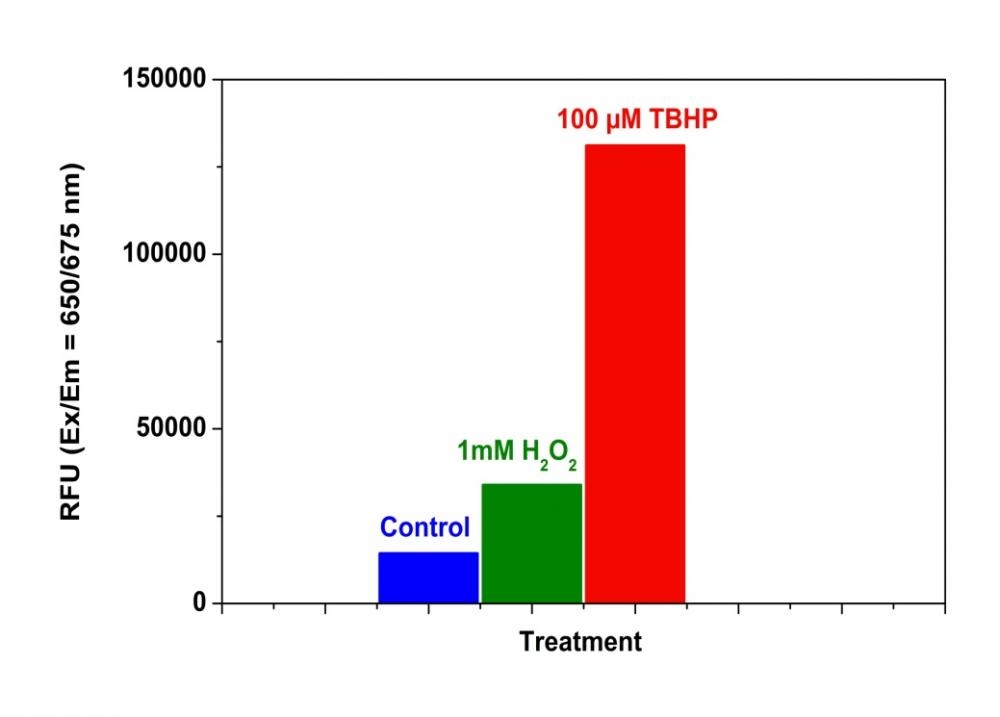Cell Meter™ Fluorimetric Intracellular Total ROS Activity Assay Kit
Deep Red Fluorescence
Reactive oxygen species (ROS) are natural byproducts of the normal metabolism of oxygen and play important roles in cell signaling. The accumulation of ROS results in significant damage to cell structures. The role of oxidative stress in cardiovascular disease, diabetes, osteoporosis, stroke, inflammatory diseases, a number of neurodegenerative diseases and cancer has been well established. The ROS measurement will help to determine how oxidative stress modulates varied intracellular pathways. Cell Meter™ Fluorimetric Intracellular Total ROS Activity Assay Kit uses our proprietary ROS Brite™ 670 sensor to quantify ROS in live cells. The cell-permeable and non-fluorescent ROS Brite™ 670 exhibits a strong fluorescence signal upon reaction with ROS. ROS Brite™ 670 sensor is localized in the cytoplasm. The fluorescence signal of ROS Brite™ 670 sensor can be measured by fluorescence microscopy, high-content imaging, microplate fluorometry, or flow cytometry. The Cell Meter™ Fluorimetric Intracellular Total ROS Activity Assay Kit provides a sensitive, one-step fluorimetric assay to detect intracellular ROS (especially superoxide and hydroxyl radical) in live cells within 1 hour incubation. The assay can be performed in a convenient 96-well or 384-well microtiter-plate format using either a fluorescence microplate reader or a fluorescent microscope with Cy5 filter.


| Catalog | Size | Price | Quantity |
|---|---|---|---|
| 22903 | 200 Tests | Price |
Storage, safety and handling
| H-phrase | H303, H313, H333 |
| Hazard symbol | XN |
| Intended use | Research Use Only (RUO) |
| R-phrase | R20, R21, R22 |
| UNSPSC | 12352200 |
Instrument settings
| Flow cytometer | |
| Excitation | 640 nm laser |
| Emission | 660/20 nm filter |
| Instrument specification(s) | APC channel |
| Fluorescence microscope | |
| Excitation | Cy5 filter |
| Emission | Cy5 filter |
| Recommended plate | Black wall/clear bottom |
| Fluorescence microplate reader | |
| Excitation | 650 nm |
| Emission | 675 nm |
| Cutoff | 665 nm |
| Recommended plate | Black wall/clear bottom |
| Instrument specification(s) | Bottom read mode |
Documents
Contact us
| Telephone | |
| Fax | |
| sales@aatbio.com | |
| International | See distributors |
| Bulk request | Inquire |
| Custom size | Inquire |
| Technical Support | Contact us |
| Request quotation | Request |
| Purchase order | Send to sales@aatbio.com |
| Shipping | Standard overnight for United States, inquire for international |
Page updated on December 20, 2025
